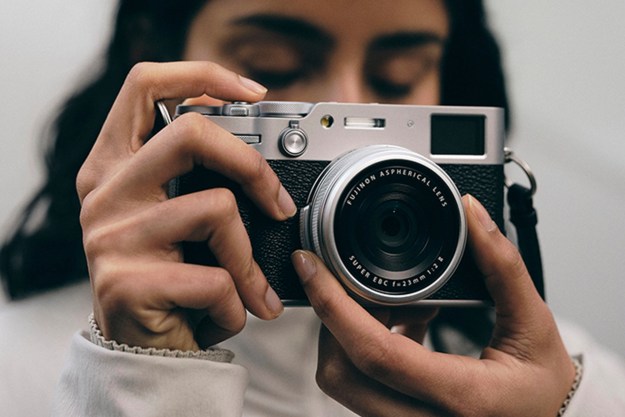Social media platforms like Instagram, Facebook, and Twitter changed the way we share photographs. In the beginning, they were excellent platforms for photographers to build their fan bases and have their work noticed. But as they continue to become more popular — and brand-focused — many photographers are becoming frustrated with the changes social media giants have made, from algorithmic sorting to the huge uptick in ads.
If you’re tired of fighting to be seen on social media, here are some alternative ways to display your work online.
1. 500px

500px is a popular photo-sharing website. While a mobile app is available, the site was created with desktop in mind. Although it works on a similar algorithm to Instagram’s (posts rank higher based on engagement), the site as a whole is more focused on quality photography rather than the mishmash of content that ends up on Instagram. By that, we mean you won’t have to deal with influencers, corporate ad campaigns, or your friend’s amateur food photography while trying to find good images.
500px also allows users to license their images. The site has two distribution partners and photographers can earn between a 30%-60% royalty payment, which is dependent on if it’s an exclusive license or not.
So, if you are looking for a photo-sharing platform away from traditional social media, 500px is an attractive option thanks to its heavy focus on the photography community.
2. Flickr

One of the original photography portfolio services, we pondered whether or not to include Flickr in this article. Not because it lacks quality, but based on its recent plea for more paid users, it’s uncertain how much life is left in this seasoned photo-sharing site.
For now, it’s still here, and until it waves the white flag of surrender, it’s a great option for sharing your portfolio with the rest of the photography community. From personal streams to interactive groups, Flickr has plenty of avenues for you to share, discuss, and critique photography.
Flickr also acts as a cloud storage service. Users can store their images and access them anywhere with an internet connection at any time. At present, you can store 1,000 photographs free of charge. Beyond that, you’ll need to pay the $50 per year for Flickr Pro. It’s worth it considering you get unlimited storage, an ad-free experience, and more in-depth stats on how your images are performing — all for less than five bucks per month.
3. Behance

Being the offspring of Adobe, Behance, naturally, is aimed at all types of visual creatives. From graphic designers to photographers, Behance is the place to show off your best work.
The platform allows users to share projects, single images, and mood boards. Behance isn’t for Auntie Sally’s salad snaps; rather, it’s for the serious creative. Because of its credibility, you can be sure to find experienced, educated photographers with trustworthy opinions. You have full control over how your work is used (unlike many other sites), meaning you can make it free for redistribution, or withhold all permissions for someone else to publish your work elsewhere.
4. Vero

Designed to be the best alternative to Facebook and Instagram, Vero promised big things when it blew up back in 2018. When the photosharing app promised no advertisements, no algorithms, and less control over user data, people stopped and took notice. The user interface was similar to that of Instagram, making it simple to share your images.
The Vero boom was stopped in its tracks when people realized, among other things, that to use the full application features, a subscription fee would need to be paid. All of a sudden, people no longer cared about Facebook and Instagram’s data breach, ever-changing algorithms, and influencer culture. But for those that still do, Vero is still around and a solid option for people looking for something different.
5. A website

Yes, personal websites still exist! If you’ve yet to do so, creating a website for your photography is a fantastic option. It removes the requirement of playing by the rules of a big company. You have full control of the type of content that you share and how it’s displayed, and you can own your own domain.
If the thought of creating your own website sounds overwhelming, don’t worry. Website building platforms such as Format, Squarespace, and WIX make creating a website more straightforward than ever. Within an hour, you have a clean, well-laid-out space to share your photographs. It’s best to learn some basic SEO to ensure it ranks well on Google, but with a bit of work, you can make it your sole way of sharing your work with the world.
Should photographers still use Instagram?
Social media isn’t going anywhere. It can still present great opportunities for your work to be discovered. However, the game has changed, and to be successful on platforms like Instagram today takes more work and a different approach than it did in the years before the algorithm. Still, major social media platforms offer the largest potential audiences, which mean they may be worth the headache to maintain an active account.
If you’re ready to call social media quits, though, rest assured that doesn’t mean you have to go completely dark. The above options offer additional ways to gain exposure, most with much more control than you get with major social media apps.
Lastly, none of these services are mutually exclusive. A personal website can compliment your Instagram account, and vice versa. Put your resources into what makes the most sense for you, and hopefully you won’t go crazy chasing after an algorithm.
Update: The original article misstated details about 500px. This article has been updated with the correct information.




